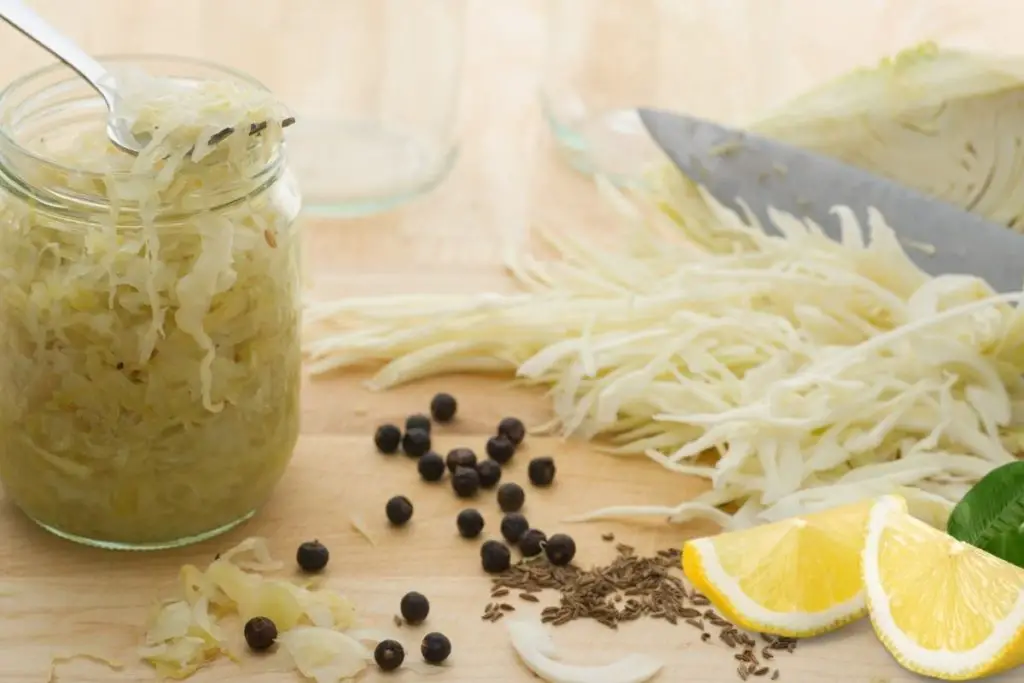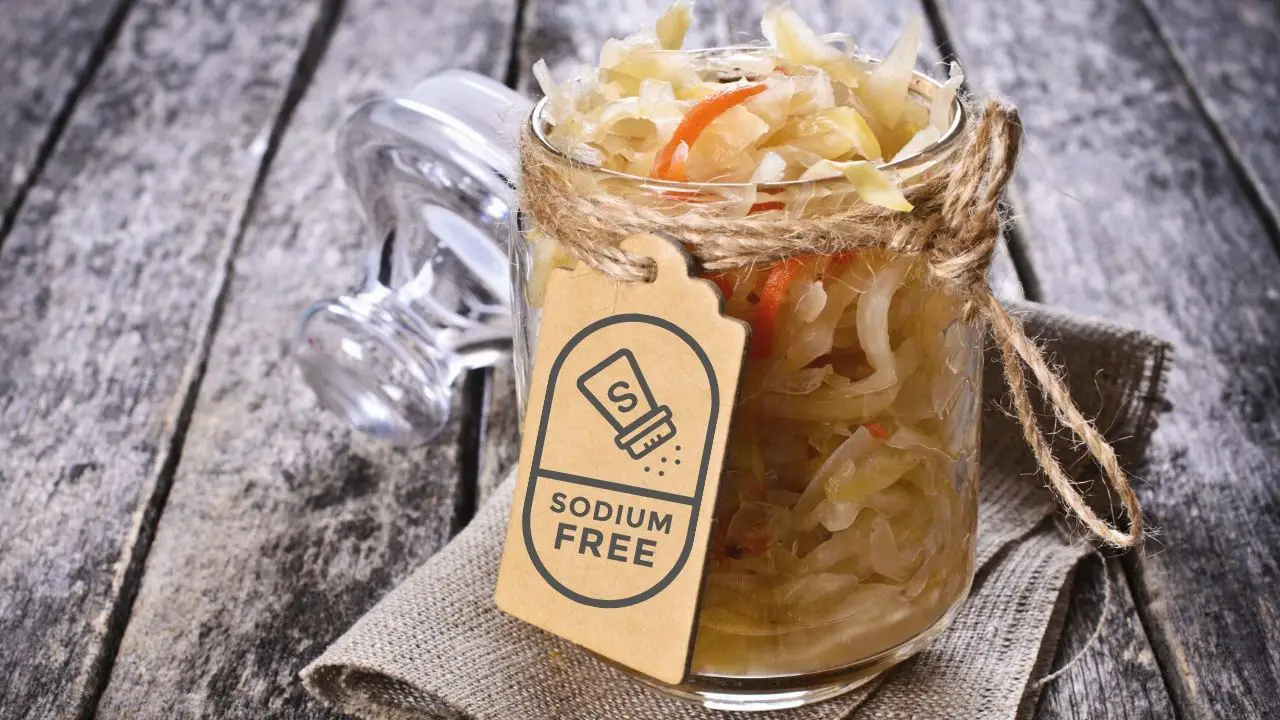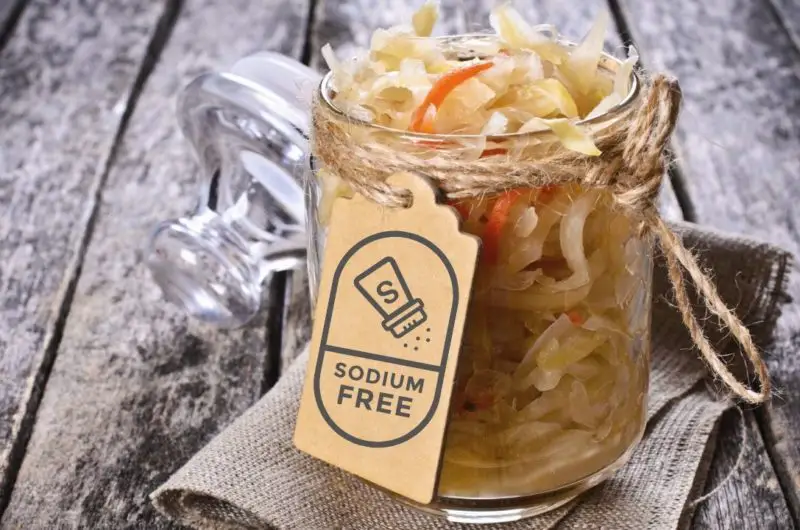Originally developed in Central and Eastern Europe, sauerkraut is one of the healthiest and oldest varieties of fermented foods around. Packed full of gut-boosting probiotics, fiber, vitamin C, and vitamin K, this powerhouse food is an important staple for promoting digestive health.
But probiotics and vitamins are not the only things that this fermented cabbage is packed full of. Sauerkraut also contains a lot of sodium chloride (NaCl), commonly known as salt. A single 1-cup serving of sauerkraut could contain anywhere between 938.6 to1,560 milligrams of sodium, which is about half a teaspoon of salt and half a recommended daily allowance.
So, if you’re limiting salt intake due to health reasons, you may worry that sauerkraut is inappropriate for your diet. While it’s true that most sauerkraut is made with salt, there are some easy-to-follow, salt-free sauerkraut recipes that are great for your gut and tasty too.
Why Does Sauerkraut Traditionally Include Salt?

While there are several reasons why sauerkraut usually includes salt, there are two primary reasons: flavor and preservation.
Salt is great for flavoring foods and can help accentuate the flavors of many dishes, including sauerkraut. But, for those on sodium-restricted diets, there are tasty, salt-free sauerkraut recipes that won’t have you missing salt at all.
Adding lemon juice to your sauerkraut recipe is an easy way to mimic the sour flavor of salt, but without any of the adverse health effects.
Alternatively, adding herb seeds and spices to your sauerkraut prior to fermentation can create a tasty and unique sauerkraut flavor that is sure to please.
Beyond flavoring, salt helps the fermentation process of sauerkraut but, again, it is not necessary. In traditional sauerkraut, salt is added to create a brine that can inhibit the growth of bacteria and mold.
That said, salt-free sauerkraut is easy to make as well, be prepared to monitor the temperature and fermentation process a bit closer to ensure everything is working properly.
For salt-free sauerkraut recipes, it’s important to maintain a temperature range of between 60 to 70°F (15 to 20°C) for optimal fermentation.
Finally, salt can help sauerkraut stay a bit crisper during the fermentation process, but this is in large part because salt helps draw out moisture from the cabbage leaves, which can make your sauerkraut feel a bit limp.
Try pressing as much moisture out of your cabbage for salt-free recipes as possible to create a firmer finished product. You’ll probably need to add extra water to your salt-free sauerkraut to ensure you have enough brine for the recipe as well.
How To Make Salt-Free Sauerkraut At Home?

Sauerkraut, including sodium-free sauerkraut, is incredibly easy to make at home, with only a little time and a few simple ingredients. Your friends and family are sure to be impressed when you tell them you made your own Lacto-fermented sauerkraut.
Follow along for my step-by-step recipe and instructions below, and you’ll be well on your way to making your first batch of tasty, homemade sauerkraut without salt.
Read Also: 8 Best Probiotic Sauerkraut Smoothie Recipes – (Nutritious And Tangy).
Frequently Asked Questions

How long can sauerkraut last in the fridge?
A properly made batch of sauerkraut without salt can last for four to six months when refrigerated.
Do I need to heat my sauerkraut before eating it?
Sauerkraut can be used either cooked or raw; however, cooking your sauerkraut prior to use can kill off the helpful probiotics in your batch.
My sauerkraut has mold on it. Can I still eat it?
This is a personal choice and really up to you. Most sauerkraut aficionados believe it is okay to eat moldy sauerkraut if the mold is only on the surface and is green or gray in color and the mold can simply be removed with a spoon. If, however, your sauerkraut smells off or has black, pink, or orange mold, it is not safe to consume.
Read Also: 6 Healthy Recipes With Sauerkraut – (Probiotic And Nutritious).
In Conclusion
Sauerkraut is a great way to get probiotics into your diet. It is low in calories and high in fiber. And yes, if you are trying to avoid sodium, you can make your own sauerkraut without salt. If you are new to fermenting your own cabbage, start with a small amount and work your way up to larger serving size.

